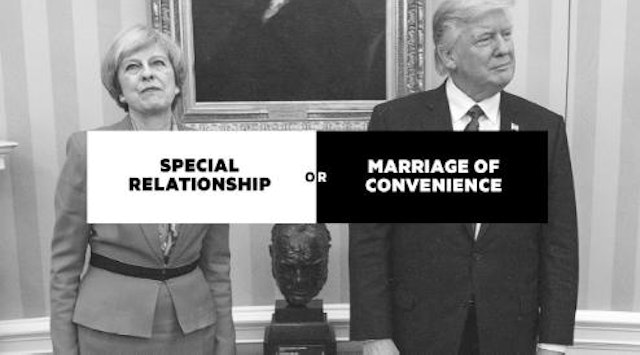The FT encourages users to ‘think beyond black and white’ in a politically polarized era
The Financial Times (FT) has today (April 11) unveiled a global marketing campaign leveraging both its unique approach to news coverage, as well as its historic pink branding, by encouraging users to "think beyond black and white".

The ‘black and white’ campaign is al reminder that the FT continues to provide high-quality and impartial news & analysis / FT
In the wake of Brexit, and the combative Trump Administration in the White House, as well as accompanying concerns around fake news, traditional broadsheet titles, or ‘quality press’, have been keen to highlight their credentials when it comes to quality coverage of current affairs.
However, today’s FT launch stands out among this milieu as it uses campaign imagery depicting current global leaders (see image above) and copy to highlight the relatively non-partisan nature of the title’s political coverage.
“For the full perspective, turn to the FT,” reads the campaign’s strapline, which is geared towards demonstrating how how the title’s coverage “takes readers beyond the headlines and helps them make the right connections in complex and uncertain times.”

Sacha Bunatyan, The FT’s B2C marketing director, said: “At a time when many publications feature opinion rather than reporting, the ‘black and white’ campaign is a playful but powerful reminder that the FT continues to provide high-quality and impartial news and analysis. It presents all sides of the argument so our discerning readers can make their own decisions.”
The integrated campaign was developed in partnership with GroupM’s digital marketing outfit Essence, and will be rolled out across the UK, US and Asia Pacific, with executions across video, mobile, display, social media, audio as well as out-of-home.
Andy Veasey, Essence’s creative director, added: “High-quality journalism is an essential service in today’s cluttered world of fake news and social media. This campaign promotes the unique perspective of the FT by presenting typical news as black and white before turning the page to reveal the FT’s distinctive pink brand and the full perspective: clarity amid the complexity.”
The campaign was launched the same day as a new study from published by Network Research shows that public trust in the reliability of media information has declined significantly in the last 12 months, with a third of the 1,000 people participating in the study claiming their trust in the reliability of information presented by media outlets has reduced since the start of 2016.
Among the other findings in the survey were:
- 63% said they think the media industry needs more regulation
- 39.5% feel the government has significant influence on the media agenda
- 32% feel businesses have significant influence on the agenda
- Almost half of the public are suspicious they may have seen or read fake news recently
- Over 83% of respondents believe there should be greater penalties for reporting fabricated news stories
- 24% state they used social media as a source of news more frequently than a year ago
- 70% of people believe social media platforms should be responsible for verifying the authenticity of a news story if it is being shared widely
Commenting separately from the campaign and Network Research study Tal Smoller, Bloomberg Intelligence, industry analyst, said that growing popular concern around fake news may well prove a boon for more traditional publishers, both in terms of online ad revenue, as well as bolstered digital subscription fees.
“Worries about the spread of fake news on Facebook, and the backlash against YouTube's inappropriate advertising placements, may inadvertently boost publishers' near-term monetization of online content,” she said.
“The proliferation of news from unverified publishers could spur readers to subscribe to publishers' established paid-for publications. Moreover, the arguably more controlled, predictable content on publishers websites and apps may prove a safe haven for brands reevaluating their digital ad spending on social media.”

